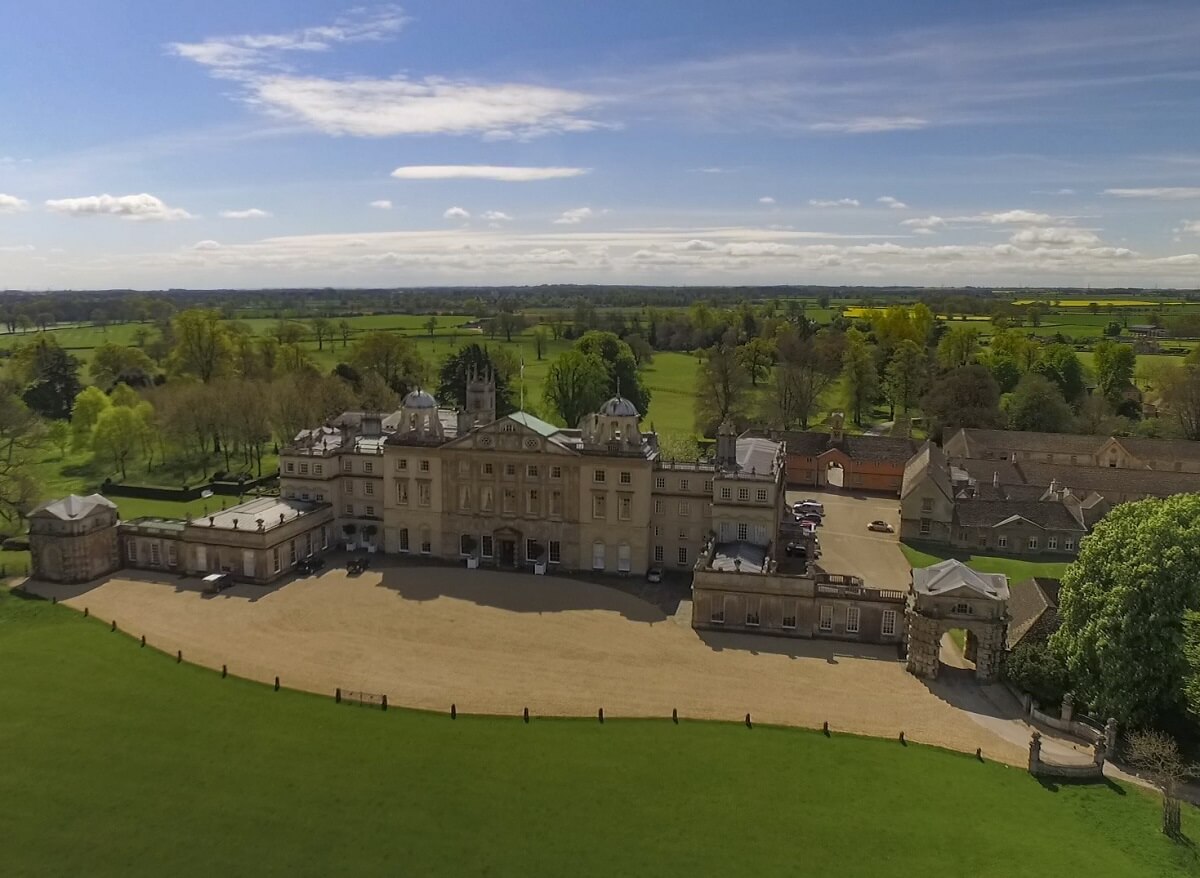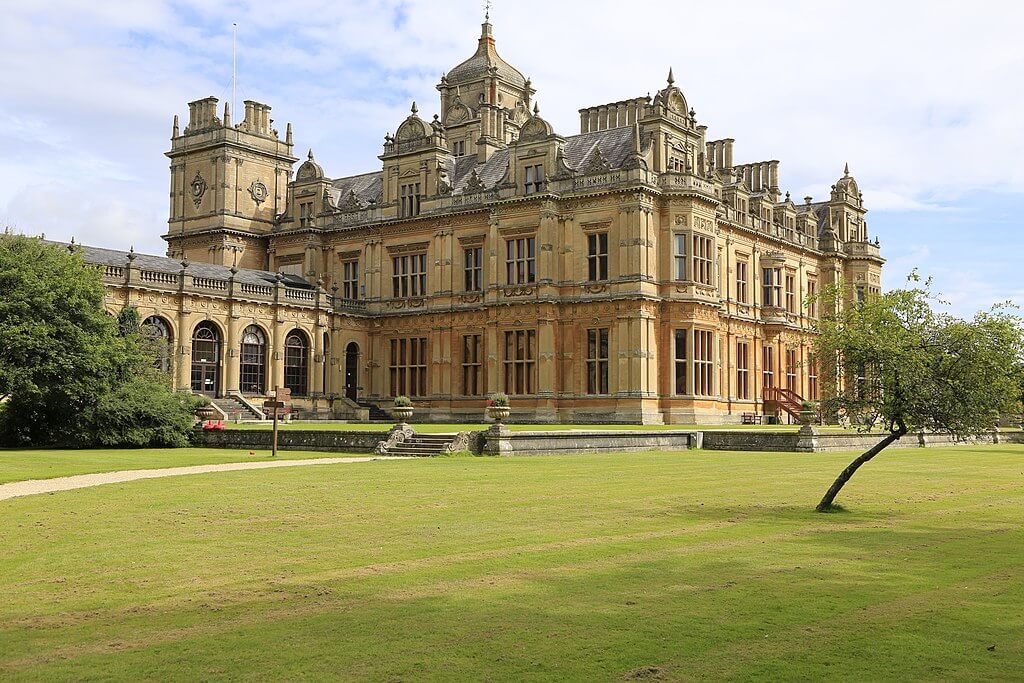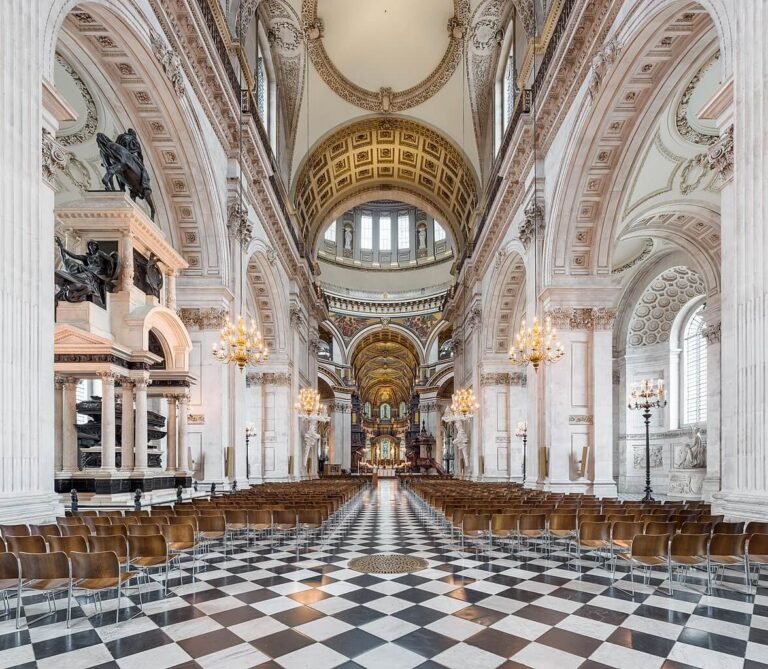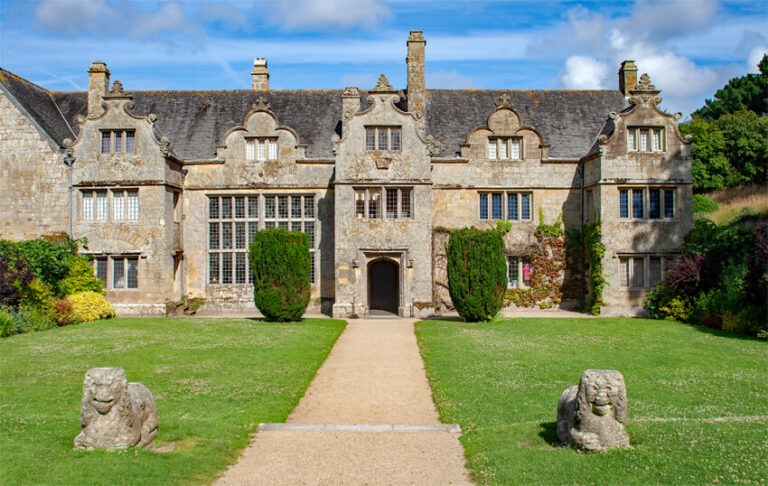22 Beautiful Castles & Stately Homes in Gloucestershire
Gloucestershire is a county in the south west of England. And you can find many beautiful stately homes and castles in Gloucestershire that you can visit. The Gloucestershire county lies close to the city of Oxford, making it a perfect countryside day trip when you visit Oxford.
The county Gloucestershire offers many stately homes. From Prince Charles and Camilla’s private residence (Highgrove House) to historic houses ranging from the Tudor period to the Arts and Crafts movement.
I have listed 22 gorgeous stately homes in Gloucestershire, many of which you can visit or even stay at. At the end of this post you will also find a map of Gloucestershire with all these stately homes listed. Very handy for a road trip.
See also: the best stately homes around Oxford

Badminton Estate
The large country house has been owned by the Dukes of Beaufort since the 17th century. During the Second World War, Queen Mary lived at Badminton Estate. Today the house is an event venue. But occasionally the house is opened for groups (15-30 people) to get a private tour of the estate.
Berkeley Castle
The 11th century castle has been owned by the Berkeley family since its construction and is one of the March castles (to keep out the Welsh). Unique about this castle is that the building, the family, the archives (dating back to the 12th century), contents and town have all survived.
The castle is also believed to be the place where King Edward II was murdered in 1327.
Today you can visit the castle and gardens on Sunday-Wednesday from Spring to Autumn.

Chavenage House
Made of Cotswolds stone, Chavenage House was built in 1576 in Elizabethan style. Chavenage House is often used as filming location. And it’s perhaps best known for appearing as Trenwith in the BBC series Poldark.
Chavenage is still a family home, but you can visit the 400-year-old Cotswolds manor on specified days.
Clearwell Castle
In The Forest of Dean stands the first 18th century Gothic revival castle built in England. In the 20th century, the castle was almost destroyed. But luckily it has been carefully restored. The castle is perhaps best known as a recording studio for bands like Lep Zeppelin, Deep Purple and Queen. Currently Clearwell Castle is a wedding venue.

Dyrham Park
This Baroque country house was built for William Blathwayt in the 17th and 18th century. The house has an extensive furniture and art collection. Including a collection of Dutch masters.
Dyrham Park is now part of the National Trust and the house, gardens and tea room can be visited.

Ellenborough Park
A country house with 500 year history can be found in Southam, Gloucestershire. In 1485 the built of a manor house started on an elevated spot in the countryside. The Great Hall was first built and over the years the manor house extended to the impressive country house that you see today.
Today Ellenborrough Park is a luxury hotel. Read more about luxury country house hotels in the Cotswolds →
Elmore Court
For almost 800 years Elmore Court has been owned by the Guise Baronets. The current house dates back to the 16th century with alterations being made in the 18th and 19th century.
Today the house is an exclusive event venue and guest accomondation.
Frampton Court
On the Frampton Court estate stands a Palladian style country house with a Gothic garden house. The estate has been owned by the Clifford family since the 11th century. But the current house was built in the 18th century.
The estate – on the banks of the river Severn on the edge of the Cotswolds – is currently and event venue and holiday accomondation.
Highgrove House
Highgrove is the family residence of the Prince of Wales and the Duchess of Cornwall. The 18th century house was bought by the Duchy of Cornwall in 1980 and Prince Charles added neo-classical elements to the Georgian house.
The Prince has also created a wild garden, formal garden and walled kitchen garden. These gardens are open for visitors.

Highnam Court
This 17th century stately home is one of the few houss built in the Commonwealth period (1649-1660). In 1838 Thomas Gambier Parry bought the estate. He was an artist, musician and art collector. And in Highnam Church you can see frescoes painted by Parry.
Thomas Gambier Parry also layed out the gardens at Highnam Court. In the 20th century these gardens were completely overgrown. But in the last 20 years these have been lovingly restored to its former glory.
The Highnam Court Gardens are part of the National Garden Scheme. And thereby open for visitors on selected dates.

Horton Court
Horton Court is a stone 16th century manor house in Horton. The building includes a 12th century Norman hall and early Renaissance decorative motifs.
The manor house has also bee used as a filming location for Wolf Hall and Poldark. Today it is owned by the National Trust and you can rent the manor house as a holiday accomondation.
Lodge Park and Sherborne Estate
Lodge Park is England’s only surviving 17th century grandstand and deer course. In the 19th century the building was transformed into a house and since 1982 it is owned by the National Trust.
The manor house stands on the Sherborne Estate full of wildlife. Several footpaths run through the estate and include a sculpture trail. The estate is open for visitors daily (from dawn to dusk), Lodge Park is only open by pre-booked tour.

Newark Park
Newark Park was built as a Tudor hunting lodge for Sir Nicholas Poyntz. In 1672 the hunting lodge was considerably extended with a new four-story wing. And architect James Wyatt turned it into a four-square house in 1790.
In the 20th century Newark Park was used as a nursing home, and the house fell into disrepair. American architect Bob Parsons renovated and conserved the manor house and thanks to him Newark Park is now an important architectural building.
Newark Park and garden is open for visitors through the National Trust.

Owlpen Manor
The manor house has Medieval origins, but the majority of the house was built in the Tudor period by the Daunt family between 1464 and 1616. The manor was an important icon in the Arts and Crafts movement. And writers such as Henry Avray Tipping and Christopher Hussey wrote about Owlpen Manor.
The current owners (Sir Nicholas and Lady Mander) have re-created the Stuart gardens. The house is open for visitors and the estate also offers holiday cottages.

Rodmarton Manor
Rodmarton is an Arts & Crafts manor house, bult in the early 20th century for the Biddulph family. The house, including all its furniture, is made according Arts & Crafts ideals. It is also one of the last houses that is built in traditional style, where everything is made by hand with local materials.
The house and gardens are open on Wednesday and Saturday; May-September. The gardens are also open during snowdrop season.

Sezincote
Sezincote House is an early 19th century manor house designed by Samuel Pepys Cockerell. It is one of the most notable Neo-Mughal architecture in England. The Neo-Mughal architecture was a 19th century architecture movement, inspired by 16th and 17th century architecture from the Mughal empire.
This little India in the Cotswolds is open for visitors. The garden is open all year round (except December); Wednesday-Friday. The house is open May-September; Wednesday-Friday.
Sezincote House is also a wedding venue.
Stanway House
The Jacobean manor house was built in the 16th and 17th century for the Tracy family. The house is famous for its 300 feet single-jet fountain, which is the highest in Britain.
Peter Pan writer J.M. Barrie was a frequent visitor to the house in the 1920s and 30s.
The house and gardens are open for visitors. And is available as a wedding venue

Sudeley Castle
The castle was built in the 15th century but the history of this place spans 1000 years. Sudeley Castle has 10 notable gardens sovering 15 acres.
The was built for te Lord High Treasurer of England. Later it was seized by the crown and became property of King Edward IV and King Richard III. Henry VIII and Anne Boleyn also visited the castle. And it is the last resting place of Henry VIII’s 6th wife Catherine Parr.
The castle and gardens are open for visitors.

Tortworth Court
Tortworth Court is a Victorian manor house in Tortworth designed in Gothic style by Samuel Sanders Teulon. The country house was built between 1848 and 1853 for the 2nd Earl of Ducie.
A multi-milion pound restoration turned Tortworth Court into a luxurious country house hotel in the Cotswolds. The manor house combines the historic Gothic architecture with 21st century style and comfort.
Read more about luxury country house hotels in the Cotswolds →
Wallsworth Hall
An 18th century manor house that was built by Samuel Hayward for his wife Catherine. Wallsworth Hall still has many original features including the grand staircase.
Today, the hall is used as the Nature in Art museum

Westonbirt House
The estate belonged to the Holford family from 1665 to 1926. The current Elizabethan-style house was built in the 19th century designed by Lewis Vulliamy.
The estate includes garden with exotic tree species and the Westonbirt Arboretum. Country Life Magazine called Westobirt “The finest ensemble of Victorian architecture, landscape and gardens in the Cotswolds”.
The house and gardens are open on selected days by pre-booking.
Woodchester Mansion
Woodchester Mansion is an unfinished Gothic Revivial mansion house. The building of the house started in 1857 but stopped mid-1860s. Floors and ceilings are missing. The walls are not plastered and the windows are unglazed.
It is a unique view into Victorian architecture, with the structure of the house open to see for all visitors.
The house is open for visitors in the Spring and Summer months.
Google Map with the stately homes in Gloucestershire
You can also click here to see the map





